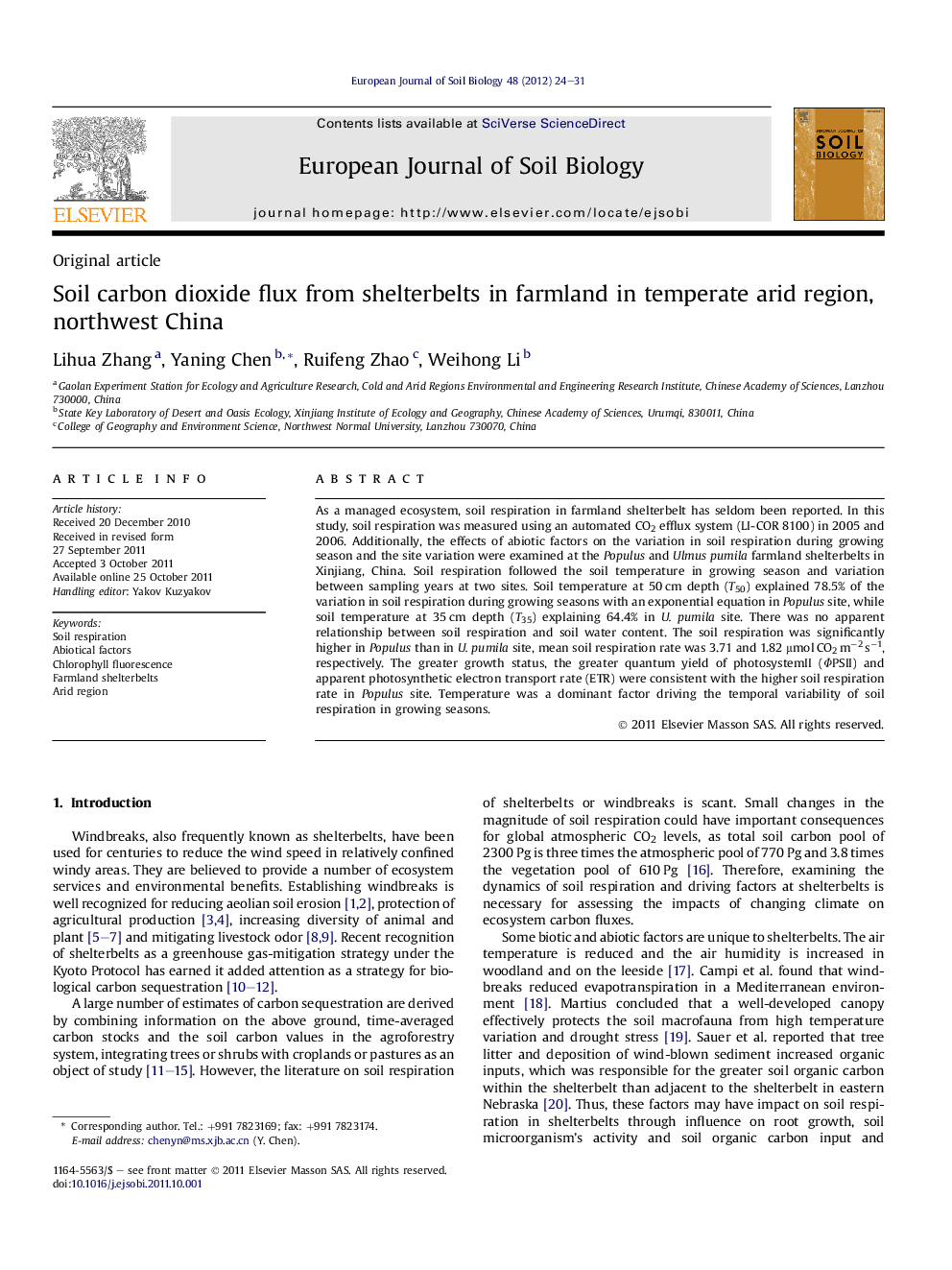| Article ID | Journal | Published Year | Pages | File Type |
|---|---|---|---|---|
| 4392096 | European Journal of Soil Biology | 2012 | 8 Pages |
As a managed ecosystem, soil respiration in farmland shelterbelt has seldom been reported. In this study, soil respiration was measured using an automated CO2 efflux system (LI-COR 8100) in 2005 and 2006. Additionally, the effects of abiotic factors on the variation in soil respiration during growing season and the site variation were examined at the Populus and Ulmus pumila farmland shelterbelts in Xinjiang, China. Soil respiration followed the soil temperature in growing season and variation between sampling years at two sites. Soil temperature at 50 cm depth (T50) explained 78.5% of the variation in soil respiration during growing seasons with an exponential equation in Populus site, while soil temperature at 35 cm depth (T35) explaining 64.4% in U. pumila site. There was no apparent relationship between soil respiration and soil water content. The soil respiration was significantly higher in Populus than in U. pumila site, mean soil respiration rate was 3.71 and 1.82 μmol CO2 m−2 s−1, respectively. The greater growth status, the greater quantum yield of photosystemII (ΦPSII) and apparent photosynthetic electron transport rate (ETR) were consistent with the higher soil respiration rate in Populus site. Temperature was a dominant factor driving the temporal variability of soil respiration in growing seasons.
► The seasonal variations and inter-annual variation in soil respiration manifested to be consistent with the change of soil temperature during the growing season at the two kind of shelterbelt sites. ► Soil temperature at deep depth was worthy to measure at the same time with soil respiration measurement in the fieldwork. ► Because of the irrigation and proximity to farmland, the ground water table was about 1 m and trees can grow depending on the ground water. Soil water content did not limit soil respiration. ► In temperate arid region, both the diurnal and seasonal temperature fluctuations are great, and thus, temperature is the main driver for plant growth and biological activity. Temperature exerts the dominant control of soil respiration during growing seasons in farmland shelterbelts.
